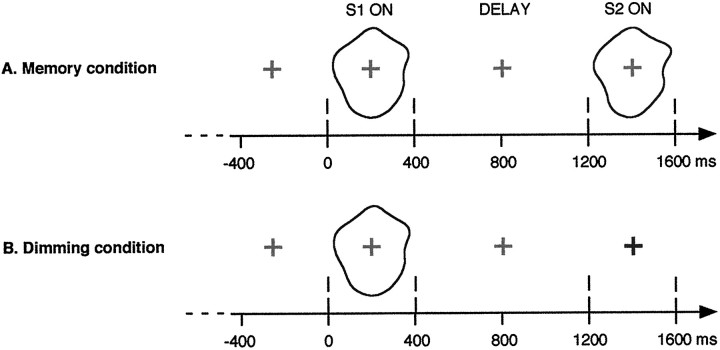Fig. 1.
Experimental design. In the memory condition, two stimuli, S1 and S2, were presented for 400 msec separated by a 800 msec delay. Subjects were to detect matching S2 (20% of the trials). In the dimming condition, no second stimulus appeared. Instead, the fixation cross could either dim (80% of the trials) or remain the same (20%), in which case subjects had to respond. In this control condition, S1 does not have to be memorized and acts only as a warning stimulus. These two conditions were presented in two successive recording sessions. We expected to find induced γ-band activity reflecting S1 representation rehearsal during the delay in the memory condition but not in the dimming condition.

